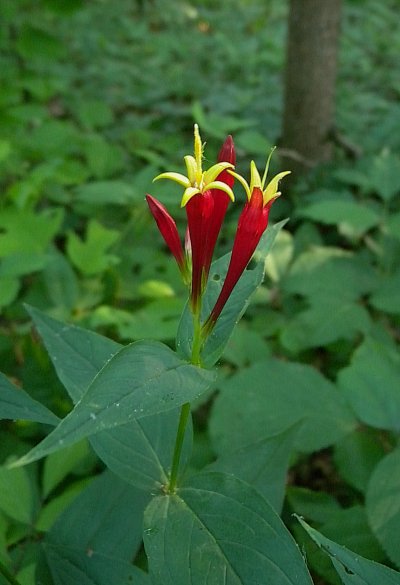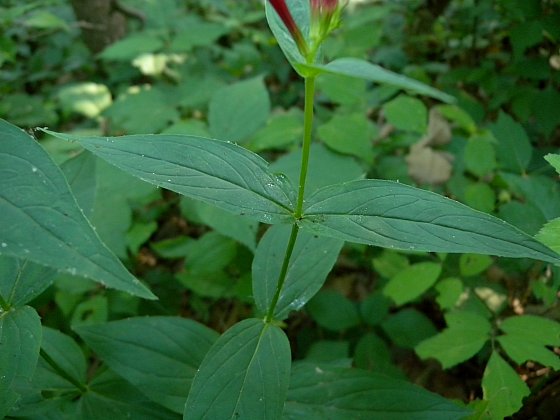
The blooming period occurs from late spring to early summer (rarely later), lasting about 1 month. There is no noticeable floral scent. Afterwards, the flowers are replaced by 2-celled seed capsules that are 4-6 mm. tall and 6-10 mm. across at maturity. Each cell of the capsule contains a few seeds. Later in the summer, these capsules split open to discharge their seeds explosively. The root system is fibrous and rhizomatous. Clonal offsets often develop from the rhizomes.
Cultivation: The preference is partial sun to light shade, moist conditions, and a fertile loam with abundant organic matter. This plant can be propagated from stem cuttings (dipped in growth hormone) or by division of the root system. Seeds should be planted in the ground as soon as possible. Insect pests and disease organisms rarely bother the foliage. Indian Pink can be cultivated in areas that are north of its natural range (in Zones 4 or 5).
Range & Habitat: The native Indian Pink is occasional in southern Illinois, while in the rest of the state it is absent (see Distribution Map). Illinois lies along the northern range-limit of this species. Habitats include bottomland woodlands, wooded areas along streams, and edges of swamps. This wildflower is found in high quality natural areas.

Faunal Associations: Ruby-throated Hummingbirds cross-pollinate the flowers, from which they receive nectar. Aside from this, little is known about floral-faunal relationships for this species. The foliage and roots of Indian Pink are usually avoided by mammalian herbivores because of their toxicity from alkaloids and calcium oxalate crystals. However, White-tailed Deer may browse on the foliage sparingly in some areas.
Photographic Location: A bottomland woodland in southern Illinois.
Comments: Indian Pink has attractive flowers with striking colors. It is the only member of the Logania family (Loganiaceae) that is native to Illinois. Once the distinctive flowers are in bloom, it is very easy to identify this plant. In the past, the roots of Indian Pink were used as a vermifuge (to expel intestinal worms), however this practice has been largely discontinued because of the potentially dangerous side-effects. Other common names of this plant are Pinkroot and Worm-Grass.